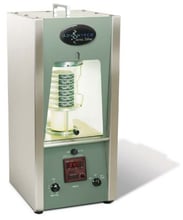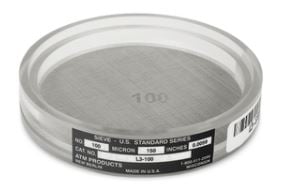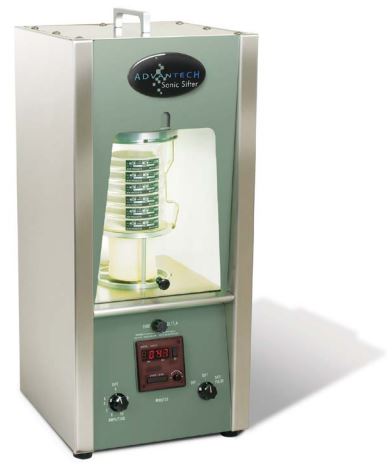What Is a L3P Sonic Sifter Separator? (Definition, Function, and Cost)
Imagine this: you are a lab manager that oversees several lab technicians and in the market for a device that speeds up production without complicating your current process. This is an obstacle many labs face as more and more material must undergo some sort of quality assurance program.
Selecting particle analysis equipment that suits your needs can sometimes be daunting as the market is saturated with particle separation devices of all shapes and sizes. Luckily, devices, such as the L3P Sonic Sifter Separator, give lab operators speed up production without sacrificing accuracy or reliability.
But does the L3P Sonic Sifter Separator fit your needs? The best way to answer that is first to answer what the device is and take a shallow dive into how it worlds.
W.S.Tyler understands that time is money. Our team of in-house experts knows that to maximize efficiency, you need equipment that can adequately test your material the first time in a timely manner.
To give you a better idea if the functional capabilities of the L3P Sonic Sifter Separator can provide the results you need, we leveraged the experience within our four walls to cover the following:
- What an L3P Sonic Sifter Separator is
- How the L3P Sonic Sifter Separator Works
- The sieves you can use
- The specifications of the device
- How much the L3P Sonic Sifter Separator costs
What Is a L3P Sonic Sifter Separator?
Developed over 50 years ago, the L3P Sonic Sifter Separator is a device that mimics the functions of a wet sieve analysis without the need for water or specialized equipment. This low-maintenance device delivers precise sieving results, making it ideal for virtually any quality control program.

While it mimics wet sieve analysis performance, this device is designed to employ specialized 3” acrylic test sieves to test dry particles ranging from 5.6 mm to 3 microns. When used properly, the L3P Sonic Sifter can prove to reduce particle size analysis testing times upwards to 90% when compared to other methods.
How Does the L3P Sonic Sifter Separator Work?
The L3P Sonic Sifter Separator utilizes an oscillating air column that creates a sonic wave, making 60 agitating waves per minute. At the same time, there is a vertical tapping that works to break down particle agglomeration.
NOTE: The vertical tapping motion can be turned on and off depending on the needs of your operation.
The amplitude used during the separation process is fully adjustable, allowing you to accommodate the various densities and textures of your materials. To help with the adjustments, the acrylic sieves are clear to allow you to visually inspect how easily the particles are traveling throughout the sieve stack.
What Test Sieves Can I Use With the L3P Sonic Sifter Separator?
The L3P Sonic Sifter uses a specific 3” clear acrylic test sieves. These sieves can employ either us standard wire mesh sizes or electroform precision mesh for applications that require finer particles to be tested.

To that end, the number of sieves you can fit in your stack depends on the sieve variant. The sieve capacity goes as follows:
- 6 S Series Acrylic Sieves
- 3 M Precision Series (35um or coarser) Acrylic Sieves
- 1 M Precision Series (30um or finer) Acrylic Sieves w/ four spacers
What Are the Specifications for the L3P Sonic Sifter Separator?
When determining whether the L3P Sonic Sifter is suitable for your lab setting, it is critical to take the specs of the device into consideration. More than anything, this includes the physical footprint, operating temperature, and timer capacity.
Device Footprint
The current dimensional footprint of the L3P Sonic Sifter is 10” x 12” x 23”. This is equivalent to 25cm x 31cm x 61cm.
Operating Temperature
When in use, the L3P Sonic Sifter has an expected temperature range of 0° F to 120° F, or -18° C to 49° C. That said, you can also expect non-condensing humidity to occur.
For this reason, it is recommended that operators monitor and control the temperature and any humidity that may occur to ensure accurate and repeatable testing.
Timer Capacity
The L3P Sonic Sifter Separator can be set to sonic wave and mechanical pulse agitation cycles that can reach up to 24 hours. To that end, a +/- 2-second deviation can be expected.
How Much Does an L3P Sonic Sifter Separator Cost?
The L3P Sonic Sifter carries a price tag of $6,779. This prince includes the sonic sifter itself, a column lock, a diaphragm, a top cone, six acrylic sieve spacers, a fine particle collector, and a holder for the fine particle collector.
Get To Know How the Sonic Sifter Separator Compares To Other Devices
The L3P Sonic Sifter Separator is a particle analysis device the employs an oscillating air column to create a sonic wave and essentially recreate the functions of a wet sieve analysis. With the use of 3” acrylic sieves, this device can test particles ranging from 5.6 mm to 3 microns at test speeds that can reach up to 90% faster than other techniques.
But before you put all your eggs in the sonic sifter basket, it will be beneficial to truly understand what device is right for you. After all, your results are only as reliable as the equipment used to calculate them.
Here at W.S. Tyler, we strive to get our customers to a point where they can resolve all their particle analysis concerns and enable them to focus more on other aspects of their production process.
As the sonic sifter shares similar operates similarly as the ALPINE Air Jet Sieve, we recommend reviewing the following article to benign comparing how the L3P Sonic Sifter Separator compares to other devices:
About Ronnie Brown
Ronnie is the Content Writer for W.S. Tyler and has four years of experience as a professional writer. He strives to expand his knowledge on all things particle analysis and woven wire mesh to leverage his exceptional writing and graphic design skills, creating a one-of-a-kind experience for customers.




